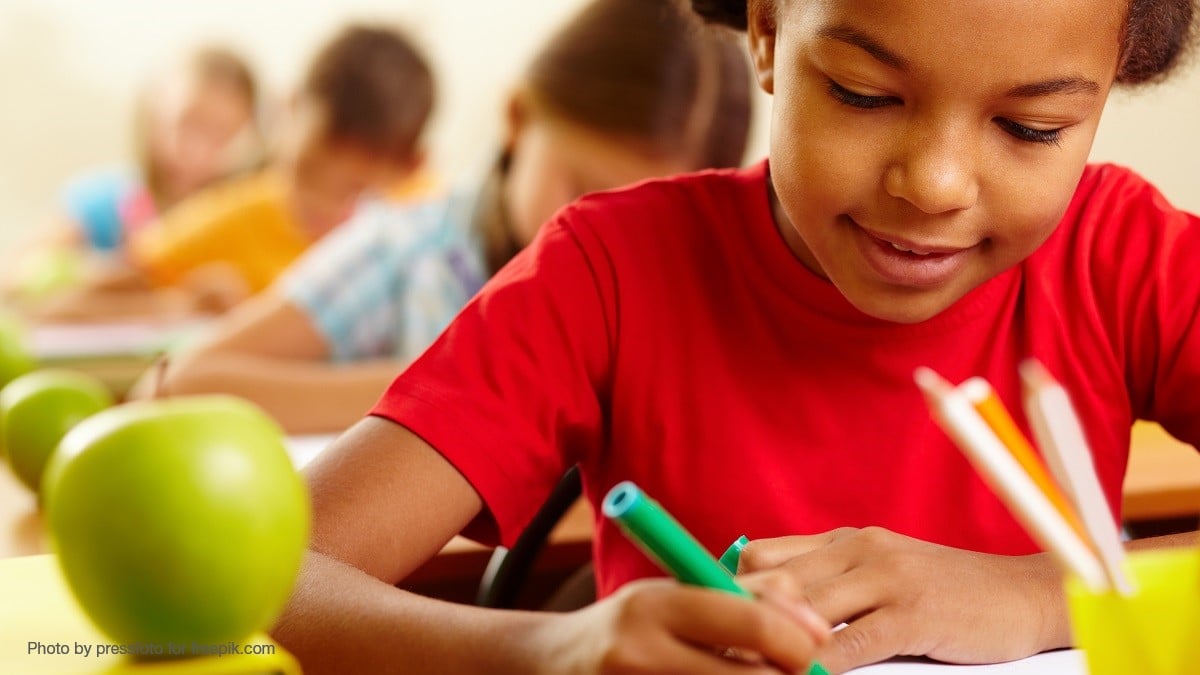
More and more schools are opening up to in-person learning, even as we get closer to the end of the school year. Regardless of if they have two months or two weeks left in the year, the excitement of being in their classrooms with their classmates and teacher can be overwhelming. We celebrate in-person learning and the effort it took to ensure everyone’s health and safety but after the initial frenzy of first day, first week, first recess, what can be done to get students focused and ready to learn?
Think about situations and occasions where you needed to regain calm (probably more so in this last year). What helped you to achieve a calm state? Did you close your eyes and take some deep, cleansing breaths? Did you turn on soft music while sipping on a cup of tea? Did you start to doodle a picture of a favorite animal, place, or object? Many times, to deal with excitement or stresses, we need a few minutes to get back to a state of calm and composure to better focus on what’s ahead. Same with students. They need to “reset” before continuing a task or moving to a new lesson. Here are eight tips to help students restore and maintain calm to help them pay attention before, and during, a lesson.
- Long, Deep Breaths. Have students place a hand on their tummies and take a long, deep breath in. Remind them that their tummies should expand as they breathe in. After 3-4 counts, exhale slowly. Repeat this a few times, and let students know that the breaths will help them focus on what is coming next.
- Stretching. After extended blocks of time sitting at their seats (at home when learning remotely, and in class due to social distancing protocols) stretching is a great way to ‘get the kinks out.’ Encourage students to do each of the stretches slowly. A few simple stretches:
- Have students stand and reach up, fingers spread wide. Tell students take a deep breath as they reach up, hold for 3 counts, then slowly exhale, and lower their arms. Repeat.
- Have students stand and reach up, fingers spread wide. Take a deep, slow inhale and hold for 3 counts. Then slowly exhale and bend over, reaching for their toes. Hold for 3 counts, and slowly curl up. Repeat.
- With the left hand on waist, and right hand up, reach up and over the left side. Do the same for the right side. Repeat.
- Soft Sounds. Create an atmosphere that conveys calm by dimming lights and playing soft and soothing sounds. Sounds can include classical music, soft jazz, instrumental music, ocean waves, or rainfall. Before playing these sounds for the students, take a listen and make sure the sounds are soothing for at least 3 minutes (some songs may be interspersed with energetic, strong sounds that can interrupt the calm you’re trying to achieve).
- Read Aloud. As your students settle in from recess, lunch, or before the end of the day, read aloud to them. If possible, use a document camera as a “big book” so that students can see the text and illustrations clearly as you read. Stories are a wonderful way to incorporate language arts while calming students and ‘resetting’ for what’s next.
- Relaxing Videos. For students who may need a visual to calm them, play videos of an aquarium, animals in nature, or scenery. There are great virtual hikes so students can ‘walk’ through the woods or rain forest for a few minutes before moving on to the next task in class. If the classroom is equipped with an interactive display, the quality of the picture will be clearer and more vivid. Students will feel immersed in the woods, rain forest, jungle, or wherever the trip takes them.
- Squiggle Surprise. On a whiteboard or interactive flat panel display, draw a squiggly line. Choose a student to turn the squiggle into a picture or design of their choice. If for health and safety reasons, students aren’t unable to touch the interactive panel at this time, use a screen sharing tool such as Unplug’d wherein students can interact with content displayed on the screen using their device. After a student completes a picture, have them draw the next squiggle for another student to complete.
- Visual Connection. Display an image that is related to the next topic to be learned. For example, if the next topic is about the solar system, share an image of one of the planets such as Saturn. Have students observe the image but do not comment or initiate conversation. Allow students to begin the conversation.
- Silent Reading. Have students pull out a book and read. Silent Sustained Reading (SSR) is a great way to settle in after a busy activity, such as recess, and return to a calm state of mind. It also re-engages the mind through the imagery of a book (whether there are illustrations or not).
When students are calm, they are more able to focus, think clearly, and problem-solve. When classrooms are filled with the sounds of voices communicating, collaborating, and thinking critically, those few minutes spent stretching or listening to jazz will be worth it and more.
To learn more on Boxlight solutions, including tools for sparking engagement and active participation, visit boxlight.com.


